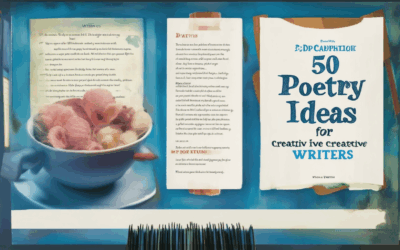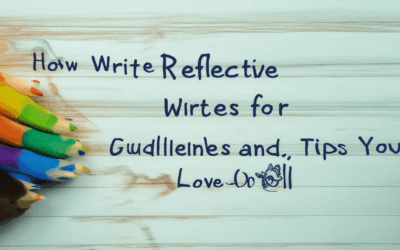Exploring the intricacies of literary thought pieces offers a fascinating journey into the art of expression and intellectual exploration. These profound pieces delve into complex ideas, challenging assumptions and offering fresh perspectives that resonate deeply with readers. Whether you’re a seasoned writer or a curious enthusiast, understanding the essence of literary thought pieces is invaluable. In this comprehensive guide, we will unravel the definition, significance, and techniques behind these captivating compositions. From analyzing notable examples to dissecting key characteristics, this article will walk you through the ins and outs of crafting a compelling literary thought piece. We’ll also delve into the essential literary devices that elevate these works and provide actionable steps to help you create your own. Whether you’re seeking inspiration or looking to refine your skills, this guide has got you covered. Let’s embark on a journey to uncover the secrets of literary thought pieces and unlock your potential as a writer.
Key Takeaways
- Understand the purpose and structure of literary thought pieces to craft impactful and organized content.
- Brainstorm ideas and conduct thorough research to ensure your piece is rich with insights and examples.
- Include a strong thesis to guide your article and maintain a clear narrative flow.
- Support your arguments with credible evidence and integrate narrative techniques to engage readers.
- Acknowledge counterarguments to demonstrate critical thinking and balance your perspective.
- Ensure clarity and coherence for a seamless reading experience.
- Make your content relevant and connect it to broader themes or trends to resonate with readers.
- Use an engaging tone to captivate attention and foster connection.
- Bring originality to your work to stand out and challenge conventional wisdom.
- Establish credibility by backing claims with evidence and expert opinions.
- End with a call to action or thought-provoking statement to encourage further exploration.
- Optimize for SEO by incorporating keywords and internal links to boost visibility.

What Are Thought Pieces?
A thought piece is a written or spoken work that presents the author’s personal reflections, opinions, or analysis on a specific topic. These pieces are typically published in newspapers, magazines, online platforms, or broadcast media and are intended to stimulate discussion or provide insight into complex issues. They often blend personal insights with research or storytelling to make a compelling argument or share a unique perspective.
Examples of Thought Pieces
- Newspaper Columns : Many newspapers feature regular columns where writers express their thoughts on current events, politics, or societal trends. These pieces are often well-researched and serve as a platform for the author’s viewpoint.
- Magazine Articles : Magazines frequently publish thought pieces that delve into cultural, social, or economic matters. These articles are designed to provoke thought and engage readers in meaningful conversation.
- Online Platforms : Websites dedicated to creative expression, like Silken Drum, often showcase thought pieces that invite reflection and exploration of various subjects. These pieces may take the form of essays, poetry, or other creative forms aimed at fostering intellectual discourse.
Purpose of Thought Pieces
- Informative : Thought pieces educate readers about a topic, providing valuable information or context.
- Persuasive : They aim to convince readers to adopt a certain viewpoint or consider a new angle on a problem.
- Inspiring : By sharing personal journeys or experiences, thought pieces can motivate readers to think differently about their own lives or the world around them.
Silken Drum, for instance, publishes thought pieces that encourage writers and readers to explore the depths of human experience through creative and reflective content. These pieces often serve as a bridge between personal introspection and broader societal concerns, making them a valuable resource for anyone seeking to enrich their understanding of the world.
Explore Silken Drum’s thought-provoking pieces and join the community of creators who share their insights and reflections.
What Are the Big Three Literary Devices?
The term “big three literary devices” typically refers to metaphor , simile , and analogy . These devices are fundamental tools for writers to enhance their prose and poetry, allowing for creative expression and deeper meaning. Below is a breakdown of each:
1. Metaphor
A metaphor is a direct comparison between two unlike things, implying a similarity or connection. It creates a vivid mental image that may not be obvious at first glance. For example: – “Time is a thief” (metaphorical statement comparing time to a thief).
2. Simile
A simile is a specific type of metaphor that uses a comparison between two unlike things, often involving sensory details. It creates a vivid picture through comparison. For instance: – “Her smile was as bright as the sun” (simile comparing her smile to the sun).
3. Analogy
An analogy draws parallels between two concepts, objects, or situations to highlight their similarities. Unlike metaphors and similes, analogies often rely on logical connections rather than creative comparisons. For example: – “The computer works like the human brain” (analogy highlighting the function of a computer similar to that of a brain).
When to Use Which Device
- Metaphor : Ideal for abstract concepts or emotional expressions.
- Simile : Best suited for creating vivid imagery or emphasizing a characteristic.
- Analogy : Useful for explaining complex ideas or processes in simpler terms.
By mastering these devices, writers can elevate their work, making it more engaging and thought-provoking. Explore more literary techniques on Silken Drum to refine your storytelling skills.
Learn More About Literary Devices
Explore Creative Writing Tips
For further reading, check out our guide on Literary Devices Explained .

How to Make a Literary Piece
Creating a literary piece involves a combination of creativity, craftsmanship, and attention to detail. Below is a step-by-step guide to help you craft your own literary work:
- Step 1: Define Your Purpose
- Step 2: Brainstorm Ideas
- Step 3: Develop Characters
- Step 4: Craft the Plot
- Step 5: Edit and Revise
- Step 6: Finalize Your Work
Start by understanding what you want to achieve with your literary piece. Are you aiming to tell a story, convey emotions, or explore a theme? Knowing your purpose will guide your creative decisions.
Let your imagination run wild. Jot down ideas, characters, settings, and plots that interest you. Consider inspiration from your surroundings, personal experiences, or literature you admire.
Give your characters depth. Think about their backgrounds, motivations, and flaws. Silken Drum encourages you to explore diverse perspectives and voices to enrich your storytelling.
Structure your narrative in a way that keeps readers engaged. A well-crafted plot with rising action, climax, and resolution will make your literary piece compelling.
Review your work critically. Look for areas where you can enhance clarity, pacing, and emotional impact. Editing is essential to refining your literary piece.
Once satisfied with your draft, finalize your literary piece by proofreading for grammar and spelling errors. Consider sharing your work with trusted peers for feedback.
Silken Drum is committed to supporting writers at all levels. Explore our resources and community to connect with fellow creators and gain inspiration. Visit Silken Drum today!

How to Write Thought Pieces
To craft a compelling thought piece, follow these steps:
- Brainstorm Ideas: Start by identifying a topic or theme you’re passionate about. Consider current events, cultural trends, or personal experiences that could spark interesting insights.
- Research Thoroughly: Gather information from various sources, including books, articles, and expert opinions, to support your thoughts with evidence.
- Organize Content Logically: Outline your piece to ensure a clear flow of ideas. Start with an introduction, present your thesis, and then develop each point with supporting evidence.
- Include a Strong Thesis Statement: Clearly state your position or argument at the beginning of your piece to guide readers through your perspective.
- Support with Evidence: Back up your thoughts with credible sources, quotes, or statistics to enhance the persuasiveness of your argument.
- Use Narrative Techniques: Tell a story or use anecdotes to make your thoughts more relatable and engaging.
- Add Counterarguments: Acknowledge opposing viewpoints and refute them constructively to demonstrate critical thinking.
- Stay Focused: Maintain a clear and consistent tone, avoiding tangential topics that distract from your main argument.
- Edit and Revise: Carefully revise your draft to ensure clarity, coherence, and correctness. Remove unnecessary fluff and tighten your writing.
By following these guidelines, you can create a thought piece that is both insightful and impactful, capable of sparking meaningful conversations and encouraging deeper reflection.
How to Structure a Thought Piece
A thought piece is a long-form article or essay that delves deeply into a complex topic, allowing for a thorough exploration of its various facets. Structuring a thought piece effectively ensures that your ideas are presented in a coherent and engaging manner. Below is a step-by-step guide to crafting a well-structured thought piece:
1. Define Your Thesis Statement
The foundation of any thought piece lies in its thesis statement. Clearly articulate your main argument or position on the topic you’re exploring. This serves as your guiding principle, ensuring that all subsequent sections align with your central idea. For example, if your topic is “The Impact of Technology on Society,” your thesis might be: “Technology has revolutionized nearly every aspect of modern life, leading to significant changes in societal structures and individual lifestyles.”
2. Develop Key Components
A thought piece typically includes several key components that contribute to its depth and complexity. These components can be outlined as follows:
- Introduction: Provide background information on the topic, state your thesis, and briefly outline your arguments.
- Thesis Statement: Clearly define your main argument or position on the topic.
- Arguments: Present evidence, examples, and perspectives that support your thesis. This section may be divided into sub-topics for better organization.
- Counterarguments: Acknowledge opposing viewpoints and critically analyze them. This demonstrates intellectual rigor and balances your argument.
- Evidence and Support: Use credible sources, statistics, and expert opinions to strengthen your arguments and counterarguments.
- Conclusion: Summarize your findings, restate your thesis, and draw meaningful conclusions from your analysis.
- Call to Action or Implications: Optionally, conclude with a discussion of the broader implications of your argument or suggest areas for further exploration.
3. Choose a Structure That Fits Your Topic
The structure of your thought piece should align with the complexity of your topic. For example: – A broad, general topic like “The History of Literature” might benefit from a chronological structure. – A specific, narrow topic like “The Role of Artificial Intelligence in Healthcare” could follow an analytical framework.
4. Use Subheadings for Clarity
Break down your thought piece into smaller, digestible sections using subheadings. This makes it easier for readers to follow your arguments and stay engaged. For instance:-
Historical Context
–
Modern Applications
–
Ethical Considerations
5. Integrate Visuals and Examples
To enhance your thought piece, incorporate visuals such as charts, graphs, or images that illustrate your points. Use examples from real-world scenarios to make your arguments more relatable and impactful.
6. Edit and Refine
After drafting your thought piece, revise it to ensure clarity, coherence, and conciseness. Remove any redundant information, tighten your prose, and ensure that each section transitions smoothly to the next.
Example Structure for Silken Drum
At Silken Drum, we believe in fostering a space for creative expression and reflection. Our thought pieces often follow a structure that combines personal insight with broader cultural observations. For example, in our article ” The Power of Poetry in Modern Society</i),” we explored the role of poetry in today’s world through historical context, contemporary examples, and a discussion of its therapeutic benefits.
Competitor Analysis
When discussing platforms like Silken Drum, it’s important to acknowledge competitors and their contributions to the field. While we focus on celebrating originality and fostering community, platforms like Silken Drum continue to innovate and provide opportunities for writers to share their work. We respect the unique approaches taken by competitors and strive to differentiate ourselves through our commitment to quality and community-driven content.
By following this structure, you can create a thought piece that is both intellectually stimulating and easy to follow. Whether you’re exploring a niche topic or tackling a broad subject, a well-organized structure ensures that your ideas resonate with readers and leave a lasting impression.

What Makes a Good Thought Piece?
A well-crafted thought piece is a nuanced blend of introspection, analysis, and insight, designed to provoke thought and spark conversation. Here’s what sets a great thought piece apart:
1. Clarity and Coherence
A thought piece should be easy to follow, with a logical structure that guides the reader through your ideas. Maintain a clear narrative flow, ensuring each paragraph transitions smoothly to the next. Use concise language to convey complex concepts without overwhelming the reader.
2. Depth of Analysis
Thought pieces excel by delving beneath the surface. Avoid superficial observations and aim to uncover underlying truths or connections. Consider how your perspective adds value to the discussion and whether you bring a unique angle to the topic.
3. Relevance and Connection
Great thought pieces resonate with readers by addressing timeless or timely issues. Connect your ideas to broader themes or trends, making it easier for readers to relate and engage with your perspective. Show how your thoughts contribute to a larger conversation.
4. Engaging Tone and Style
Whether humorous, reflective, or provocative, the tone should captivate and hold attention. Use storytelling, analogies, or rhetorical questions to make your ideas more relatable. A conversational yet respectful tone fosters connection.
5. Originality and Uniqueness
Thought pieces thrive on originality. Offer a fresh perspective or challenge conventional wisdom. Avoid clichés and ensure your voice stands out. Personal anecdotes or unique experiences can add authenticity and depth to your argument.
6. Credibility and Authority
Back your claims with evidence or credible sources to establish trust. Whether through data, expert opinions, or personal expertise, ensure your reasoning is sound and supported. This adds authority to your thought process and enhances readability.
7. Call to Action or Insight
A truly great thought piece doesn’t just present ideas—it invites further exploration. End with a thought-provoking statement, a question, or a call to action that encourages readers to reflect or engage.
8. SEO-Friendly Elements
Optimize your thought piece for search engines by incorporating relevant keywords naturally. Use internal links to guide readers to related content on your site, enhancing user experience and SEO performance.
Conclusion
A thought piece is more than just an article—it’s a mindset, a journey of discovery, and a gift to your audience. By focusing on these elements, you can create content that not only inspire but also ranks highly in search engine results.




0 Comments